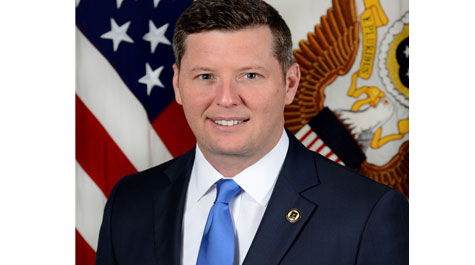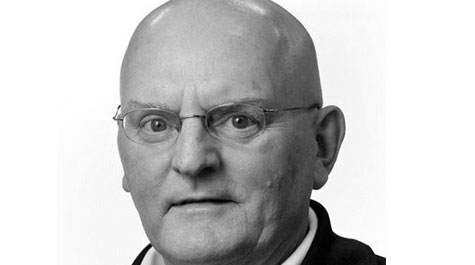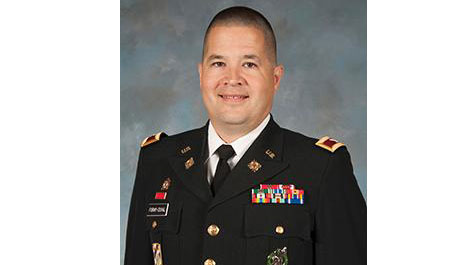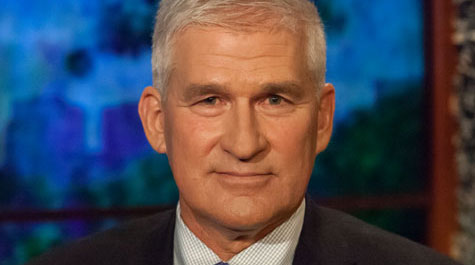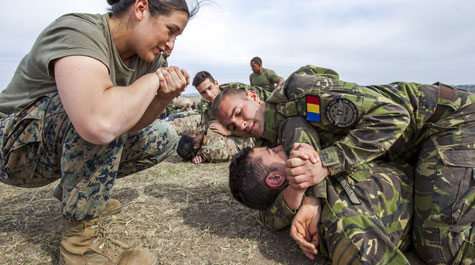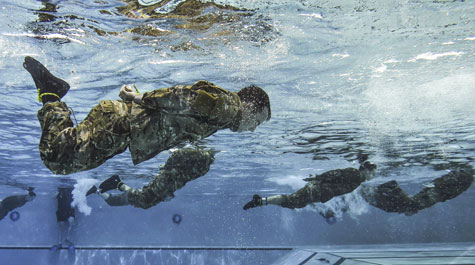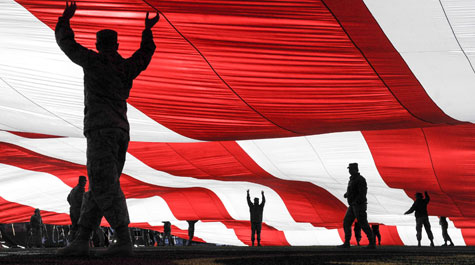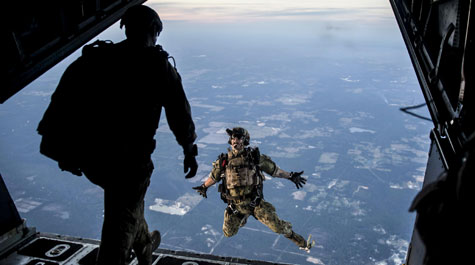W&M to hold All-Volunteer Force Symposium with special guest Patrick J. Murphy
The William & Mary Program in Public Policy will host a daylong symposium April 27 focused on examining the all-volunteer structure of America’s military.
The 2017 All-Volunteer Force Symposium will be held at William & Mary’s Sadler Center from 8 a.m. to 6 p.m. and feature a keynote address by the first Iraq War veteran elected to the U.S. Congress, former Under Secretary of the Army Patrick J. Murphy. Retired Army Reserve Maj. Gen. Dennis Laich, U.S. Army Col. Brian R. Formy-Duval and Professor Emeritus of International Relations and History Andrew J. Bacevich of Boston University will also speak at the event.
The symposium started under the sponsorship of Kansas University’s Center for the Study of the U.S. Military in 2016 to discuss whether the AVF is fair, ethical, efficient and sustainable and actually provides defense for the U.S. and its allies.
This year’s conference will further the 2016 debate that focused on the evaluation of the United States’ fiscal capacity to maintain an all-volunteer military due to high budgetary costs. Participants in the event will look more at the moral and ethical questions around why Americans serve, according to Lawrence B. Wilkerson, distinguished adjunct professor of government and public policy at W&M and event coordinator.
Wilkerson, a retired U.S. Army colonel who served in the Vietnam War as an infantry officer and helicopter pilot then as special assistant to chairman of the Joint Chiefs of Staff and chief of staff to Secretary of State Colin Powell, noted that there are legitimate sociological concerns in keeping the AVF.
“The idea behind having this conference is to continue the examination as to whether or not the American people want to maintain armed forces that are entirely voluntary,” said Wilkerson. “Of a country with about 330 million inhabitants, we want to look at the moral and ethical question: ‘Should less than one percent of the nation’s population bleed and die on the battlefield in defense of the other 99 percent?’”
History of service
According to the Selective Service System of the United States, before 1973 enrollment in the armed forces was often facilitated by conscription or the draft for males living in America. Today entry into the military is entirely voluntary; however, there is a particular caveat placed by the government to enable a ready pool of possible candidates in the event of a national crisis.
Beginning on the day of their 18th birthday, U.S. male citizens, native-born or in an immigrant status must register for Selective Service before the age of 25 (Congress is currently considering whether to include women in this requirement). Failure to do so can be punishable by the denial of certain benefits like federal student loans and grants, a fine up to $250,000, five years in prison or all three, the Selective Service states.
As to why the United States military went to an all-volunteer force model, Wilkerson said that the American public’s negative sentiment toward the country’s involvement in the Vietnam War and the consequent drafting of nearly 700,000 men to serve in a conflict they mainly came to disfavor were contributing political factors.
“The level of objection by the American people to the war in Vietnam was very high, and the administration of President Richard M. Nixon felt that resentment deeply,” Wilkerson said. “The war was very tough on the civil fabric of our society and Nixon needed a way to minimize potential undesirable reaction by the public if the nation were to involve itself in future conflicts. Therefore he initiated the Gates Commission with every expectation that it would come up with an alternative strategy to man the military and as a result, the draft ended, and the all-volunteer force was begun.”
Currently, the U.S. military draws its enlisted members mainly from America’s working class, most notably people living in states in the Southeast and Maine, according to an article published by Business Insider. To Wilkerson, American men and women coming from lower-income families are shouldering more of the burden of defending the nation in its longest war than higher-income people, something Wilkerson believes past policy-makers did not necessarily envision.
“We have real statistical data that shows who and where we recruit our forces,” said Wilkerson. “You’ve had service members from the lower quintiles of the American population — that is their levels of political influence, economic standing and education — dying in battle for this country for the past 16 years. Fighting in this extended period with a relatively small amount of people is something that the Gates Commission did not foresee when it laid out the strategy in the early 1970s. And we, in this forum think that composes a moral dilemma for our civilian and military leaders to confront.”
Has the All-Volunteer Force model worked?
After the federal government established the AVF, the plan was not to let it stand alone in time of national crisis, said Wilkerson. If the president and Congress determined that a return to the draft was necessary, the Selective Service would be accountable for providing identification of possible applicants through the sustainment of a database that would lead to filling openings that the individual military services could not do through regular recruitment, according the Selective Service.
However, the question as to whether or not the U.S. military in its current form can fully meet its global objectives has been asked on several occasions throughout the AVF’s 40-plus year history. This question involves subsidiary questions, such as whether or not the U.S. military is capable of meeting its two-major regional contingency requirement while fighting international terrorism simultaneously. Answers to this question have demonstrated mixed consensuses from national security experts and scholars like General Laich who authored the book Skin in the Game: Poor Kids and Patriots.
“The ever-rising cost of personnel unique to the all-volunteer force is affecting readiness, procurement and maintenance, as they all compete for a share of the defense budget,” said Laich. “This reality impacts our ability to meet our two-regional contingency requirement, fight global terrorism and support our allies.”
Keeping a viable U.S. military capacity in the 21st century and beyond will be a tough and expensive task and addressing the future of the AVF by laying the groundwork for proper debate among the American people is both right and appropriate, according to Wilkerson.
“We as a forum know that the AVF is a very critical component to the defense of the United States of America,” he said. “And that being said, we understand that it is a complex and multifaceted topic for policy-makers in Washington. But, the Congress and the American people should know how big of a problem this is to our society as a whole, and we look forward to hearing recommendations from everyone involved.”
The symposium is free and open to the public. There will be a catered luncheon alongside other discussions and panels. The luncheon is also free but registration is required. Visit www.wm.edu/as/publicpolicy/avf to learn more about the event and to register.















